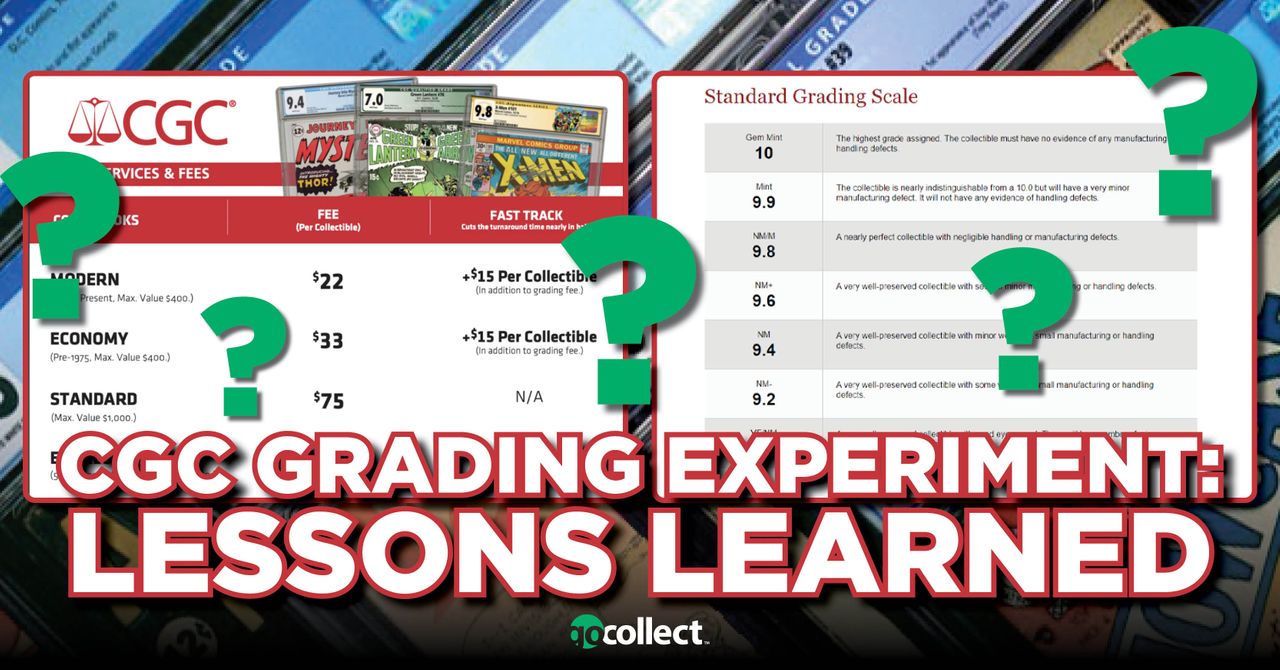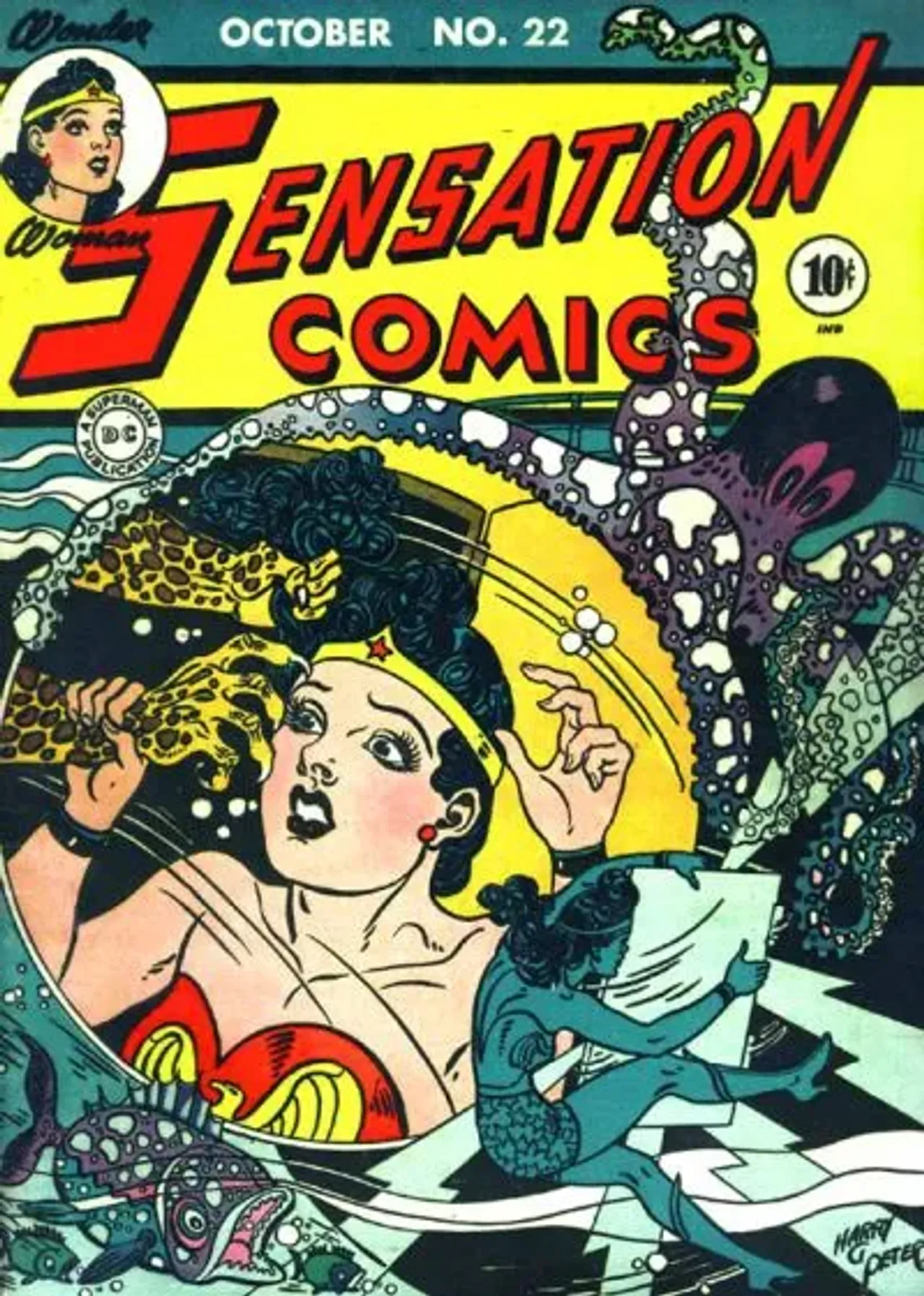The CGC grading experiment was created when another blogger and I debated whether it was more advantageous to buy books raw versus slabbed. The debate raised some interesting questions. Most sites would only guesstimate as to answers but GoCollect allowed me to go further. I interviewed the CGC president; sent in a wide range of books to be pressed and graded: and then analyzed the results. Many articles were written on the topic. Then, like with any comic book mad scientist, the experiment went out of control. It exploded because each part created new questions. It should be noted that the author paid for the costs of the experiment to eliminate any emotional biases and to maintain integrity in the data. Here is a few takeaways from what was discovered thus far....
Very Good is Area 51
Many of the people who dropped off their books for this mad scientist to be graded were asked to put the grade on their books. The control variable was that the grade had to be one that both the buyer and seller agreed to when the book was purchased. This included books bought in person or those bought online that the buyer had agreed to the seller's amateur grade. The 'submitters' were experienced collectors and their grade was reviewed by the mad scientist to see if there was an impartial amateur agreement to the grade. The area where the vast majority of raw books average graders hit the mark was the 5.0-3.5 range. This is where many raw buyers should focus.
Owners reported buying these books at great prices when reviewing the GoCollect FMV for the CGC books in that grade. Submitted books were purchased at or below the GoCollect FMV. Investors realized they could sell these books and make small to large profits as a result. Collectors realized that this was the perfect range to get books for a discount. Many said this was the sweet spot in buying books raw and not getting burned but...
One-Eyed, One-Horned, Flying, Purple Value Eater
One of the submitters is a very astute collector. They saw amateurish restoration in a Golden Age Sensation Comics #22 when they made their purchase. This issue features the 2nd appearance of the Cheetah so the submitter was not upset. The problem was that all submitters feared more professional restoration work that might not be as noticeable. Higher end books is where those type of harder to detect work would appear and that could do the most damage for overpaying.
Submitters who were collectors feared buying a book that might not be "true" representation of the issues. Investors know that certain books that are more common have a negative connotation when affixed with a purple label. The submitters stated that if one was to buy a higher end book the risk for buying a restored issue must be factored into the purchase price.
Beauty Is In the Eye of the Slabber
What once was ugly is now beautiful. Many years ago fans attended comic cons to get their books signed by noted comic book professionals that have since passed on. The sad thing was that there was not on site CGC official to attest to the authenticity of those signatures. Many books were either marked down because of an unattested signature or never sent to be graded. That has now changed.
CGC is now offering signature authentication. One submitter had purchased a box of raw comics. An inspection of those books revealed an old practice back in the day. Signers did not want to impact the visual appeal of the covers so they signed on the inside of the book on title pages or inside covers. These signatures previously added no value to the books because they could not be authenticated. The seller that the submitter purchased those books could not verify the signature so they sold them "as is". These once flawed books are now worth a few more dollars because many of these books were signed by comic book legends no longer with us.
GoCollect Raw Guide
One of the biggest gripes about GoCollect is that it is does not have a raw price guide component. The reason is that there is a hard time to verify the actual grade of raw books sold. A book that is said to be a 8.0 could in actuality be a 6.5. The problem is that does the raw collector or investor no good. Well the experiment took that flaw and then addressed it.
The experiment came up with a way to approximate how to use the GoCollect data to figure out raw prices for comic books. What happened was that the original methodology was revised over time to better assist the submitting collectors and investors to price raw books. Over time the process became much more refined.
Same Bat-Time, Same Bat-Channel
The next installment will discuss the methodology and variables one has to take in consideration to use the GoCollect data to price raw books. I hate teases, but there is so much information that it would be detrimental to eliminate some information for the sake of saving space. Finally, as this article was written another batch of books was sent to CGC that limited the variables so as to see how the methodology works on higher grade books. This was the ultimate test on the process. The prediction is that GoCollect FMV can be used for raw books if done correctly. This could provide a great new resource for our readers that will put them ahead of others hobbyists.






